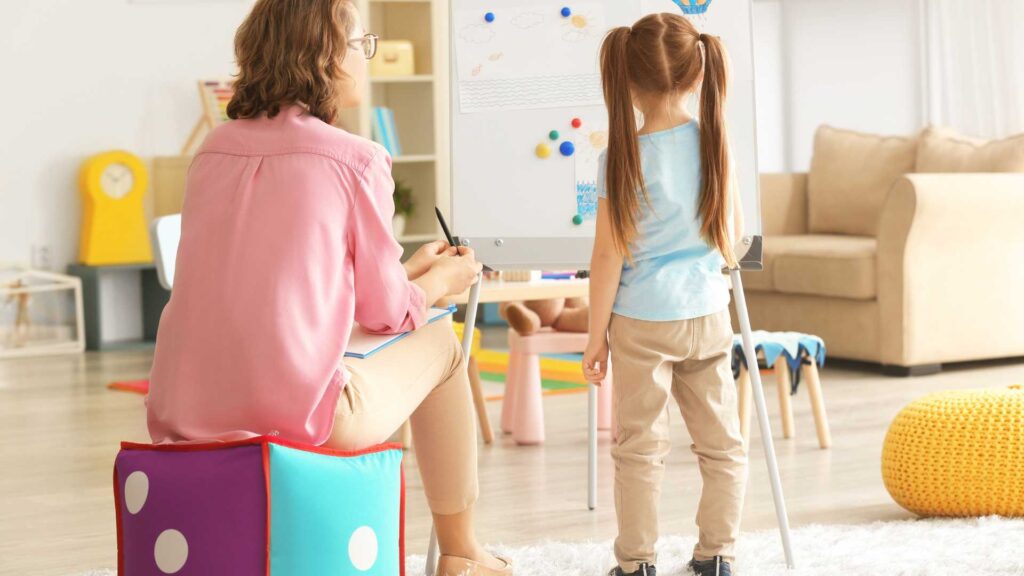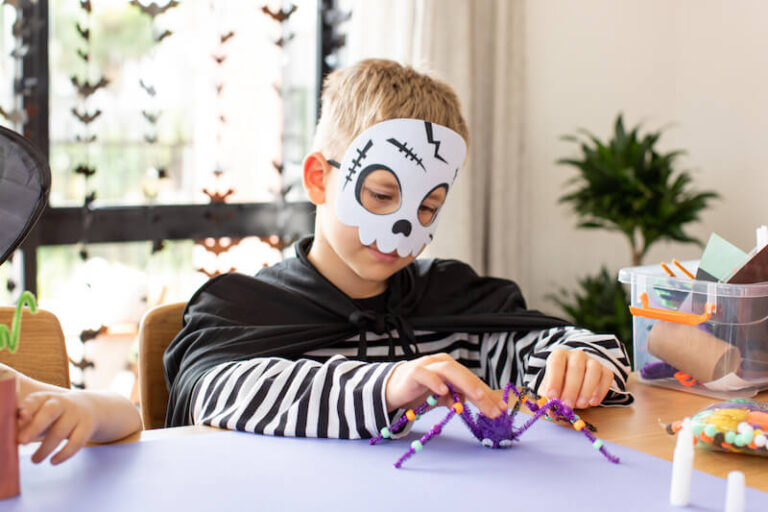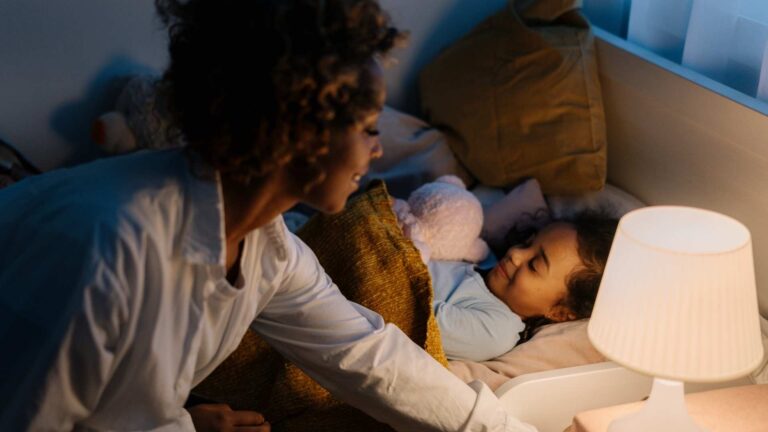How can art therapy help children with autism?
Parenting a child with autism brings unique challenges and opportunities for discovery, and when it comes to innovative activities, art therapy stands out as a fun but effective tool. Art therapy in autism is more than a creative endeavor; it is a transformative process that harnesses the profound capacity of artistic expression to bridge communication gaps and foster emotional well-being.
You may wonder, “How can art therapy help children with autism?” Through art, children with autism can experience a sense of control and mastery, contributing to improved self-esteem. Moreover, the structured nature of art activities provides a predictable environment, which can be comforting for those who thrive on routine.
Learn more about art therapy in autism, its benefits, and activities that Seattle, Olympia, Tacoma, and Vancouver families can implement at home in this blog by ABA Centers of Washington.
What is Art Therapy?
Let’s start by exploring the concept of art therapy before delving into the connection between art and autism. According to the American Art Therapy Association, art therapy is a mental health profession that promotes the well-being of individuals, families, and communities. It achieves this through active participation in artistic expression, engaging in the creative process, applying psychological principles, and utilizing personal experiences within a therapeutic relationship.
Art therapy, facilitated by a professional art therapist, effectively assists in reaching personal and relational therapeutic goals, as well as addressing broader community concerns. It not only improves cognitive and sensory-motor functions but also enhances self-esteem and self-awareness. Furthermore, it nurtures emotional resilience, promotes self-understanding, refines social skills, resolves conflicts and emotional distress, and contributes to societal and ecological transformations.
Benefits of Art Therapy in Autism
Engaging in the creative process of art therapy supports individuals with autism to improve communication, motor, and social skills. By utilizing various art materials and techniques, people with autism spectrum disorder (ASD) can delve into their emotions and thoughts, gaining insight into their feelings and understanding those of others.
Research conducted by The American Journal of Occupational Therapy highlights that art therapy interventions assist children in mastering performance skills, including participation in creative activities and social interactions. The study also notes improvements in body and motor functions.
Art therapy in autism has many advantages and benefits, but here are the ten main ones:
- Enhances Communication Skills: Art therapy provides a non-verbal outlet for individuals with autism to express themselves creatively, improving communication skills and allowing them to convey thoughts and emotions that may be challenging to communicate verbally.
- Develops Fine Motor Skills: Engaging in art activities, such as drawing, painting, or sculpting, helps individuals with autism build their fine motor skills, promoting hand-eye coordination and precise movements.
- Encourages Emotional Expression: Art offers a safe space for individuals on the autism spectrum to explore and express their emotions, fostering emotional awareness and regulation.
- Boosts Social Skills: Group art therapy sessions create opportunities for individuals with autism to interact with peers, share their creations, and collaborate on projects, promoting social engagement and teamwork.
- Builds Self-Esteem: Completing art projects provides a sense of accomplishment, contributing to improved self-esteem and confidence.
- Reduces Anxiety and Stress: Artistic expression serves as a therapeutic outlet, allowing individuals with autism to channel and manage stress and anxiety positively and constructively.
- Enhances Sensory Integration: Many art activities in autism involve sensory experiences, helping individuals with ASD improve sensory integration and tolerance and contributing to a more balanced sensory processing.
- Encourages Flexibility and Adaptability: Art therapy often involves open-ended activities, enabling individuals with autism to explore various materials and techniques, fostering flexibility and adaptability in thinking and problem-solving.
- Promotes Self-Reflection: Engaging in art allows individuals with autism to reflect on their thoughts, experiences, and perspectives, promoting self-awareness and introspection.
- Provides a Non-Threatening Environment: The non-judgmental and creative nature of art therapy creates a safe and non-threatening environment for individuals with autism, facilitating emotional expression and personal growth.
Art Therapy Activities for Kids with ASD
As a parent or caregiver, engaging in creative art activities with your child at home can play a pivotal role in enhancing their cognitive, sensorimotor, and various other skills.
While professional art therapy is commonly administered by trained clinicians in specialized centers, embracing your creativity alongside your child within the home environment can be a joyful and rewarding experience. Consider incorporating the following activities during your playdates:
- Sensory Art Wall: Create a sensory art wall using textured materials like fabrics, sandpaper, and bubble wrap. This activity not only encourages artistic expression but also provides a tactile experience that can be calming for individuals with sensory sensitivities.
- Nature Texture Rubbings: Explore the outdoors and collect leaves, bark, and other textured items. Place them under a sheet of paper and use crayons to create texture rubbings. This activity promotes a connection with nature while engaging fine motor skills.
- Sculpting with Scented Playdough: Make homemade playdough with different scents, such as vanilla or lavender. Sculpting with scented playdough provides a multisensory experience, aiding in relaxation and sensory exploration.
- Quiet Time Sensory Bottles: Create sensory bottles filled with calming materials like glitter, water, and soft beads. These bottles serve as a visual and tactile tool for self-regulation and can be particularly beneficial during moments of stress or anxiety.
- Visual Schedule Collage: Work together to create a visual schedule collage using images or drawings to represent daily activities. This visual aid helps individuals with autism understand and anticipate routines, promoting a sense of structure and predictability.
ABA Centers of Washington and Autism Care
In conclusion, art therapy in autism is not merely a creative activity for children on the spectrum; it represents a means of expression, a holistic tool for communication, and motor skills improvement.
If you believe that your child could benefit from a more therapeutic and evidenced-based approach, call ABA Centers of Washington at (877) 554-0710 or schedule a free consultation with our ABA-specialized therapists to discover the positive impact specialized treatment can have on your loved one’s life.








